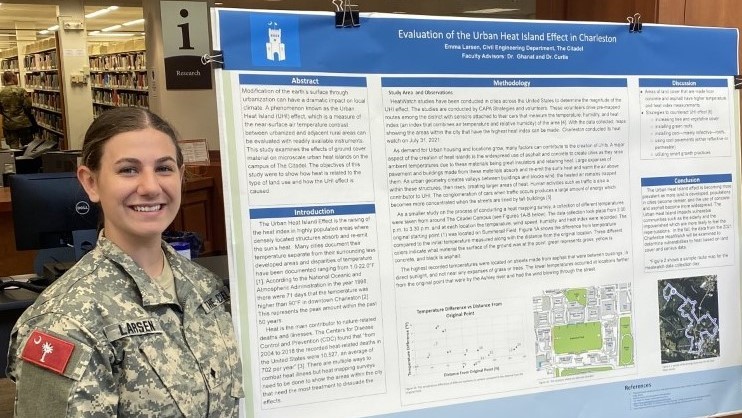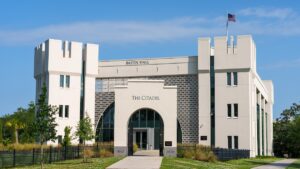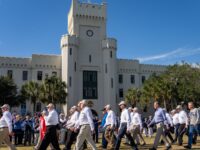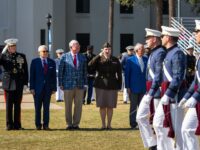
Learnings from my undergraduate research experience
By Cadet Emma Larsen, The Citadel Class of 2022, Civil and Environmental Engineering major
I was recently introduced to the urban heat island effect, the occurrence of an overall higher temperature being documented in urban areas compared to their rural counterparts, through The Citadel’s Summer Undergraduate Research Experience (SURE).
Much of this temperature difference is a result of infrastructure factors of materials — including asphalt and concrete — absorbing and re-emitting the sun’s rays, urban geometry trapping the energy within the confines of the urban boundary, and large amounts of movement and activity in a small area (roadways) causing an abundance of heat waste. The urban heat island effect directly impacts Charleston, South Carolina, my home for 11 years, piquing my interest.
I wanted to participate in research that is important to my family and me. Additionally, as an undergraduate Civil Engineering major, I was interested in learning more about extreme heat variances to help fellow cadets survive the Charleston heat as we wear grey woolen uniforms and stand outside for hours for our military dress parades and practices. So, I began engaging with HeatWatch through the SURE program and the Near Center for Climate Studies at The Citadel.
HeatWatch is an ongoing, national effort to record temperature and humidity in participating cities on a single day to see how they vary from one area of a city to the next. Through this effort, the data collected about heat within cities around the U.S. can be formed into maps visualizing how the temperature varies throughout the urban area, how the layout of the structures causes this variation and which communities are most vulnerable.
The national HeatWatch campaign is coordinated by the National Oceanic and Atmospheric Administration (NOAA) and CAPA Strategies, a climate research and data collection company. They provide devices that are heat sensors to local companies, colleges, organizations and volunteers within selected cities to conduct the data collection campaigns themselves, contributing the results to the national project and to local agencies that will find it helpful.
For Charleston, the head of this campaign was Dr. Janice Barnes, of Climate Adaptation Partners. She led a group of local organizations including The Citadel’s James B. Near Center for Climate Studies, the City of Charleston, the Medical University of South Carolina Arboretum, the Institute for Air Quality Studies and Office of Health Promotion, Charleston Resilience Network, Charleston Medical District, South Carolina Interfaith Power and Light, and Carolinas Integrated Science Assessment.
On our assigned collection day, July 31, 2021, about 30 people were needed to drive throughout the city on preplanned routes with the provided heat sensors on their cars to gather the data including temperatures and locations. While members of the organizations participated in the data collection, most volunteers were members of the community interested in helping discover more about Charleston’s urban heat impacts.
This temperature map, released as part of a report months after our data collection day, displays the results of our combined efforts. We learned the hottest urban heat island areas, in the deep red on the map, are often the most population dense and are as much as 11.1 degrees warmer than neighboring areas on a sweltering summer day.

Working with the HeatWatch effort allow me to participate in paid undergraduate research through our SURE program and it offered a highly unique experience of partaking in a much larger, national endeavor.
I was able to interact with Dr. Barnes, who involved those of us representing The Citadel in the planning, video conference calls, organizational emails, volunteer recruiting efforts and the day of data collection for Charleston HeatWatch. On collection day, I was one of the volunteers driving in my car on a pre-planned route of the city with a heat index sensor attached to my window. For my experience in participatory learning, in addition to the in-depth learning I achieved from my research, I gained experience with major project planning, learned how a multi-company endeavor is planned and coordinated, and saw how global climate issues can be addressed within a community.
After being encouraged to read and study deeply into a topic, I have understood more about the urban heat island effect than I could have learned in a regular class. The SURE program created a community of professors and students interested in studying beyond the expected curriculum and encouraged active participation instead of passive. There were not any tests or exams that created parameters of what I was supposed to know. Instead, this is an educational experience without limits, where students are given room to teach themselves and become subject matter experts on a topic. Overall, my research experience made me see the city in a different light and made me more aware of how small design choices around me are directly affecting the climate. I am going to take these experiences with me as I am writing an academic journal article about participatory learning and pursuing a Ph.D. in Civil Engineering.
Now, as I approach graduation this May and with summer just around the corner, I am considering the urban heat effect that will affect so many people in our Charleston community. I hope that my future career as an engineer will include being able to help make a difference in mitigating some of the negative impacts of climate change on local communities.
Cadet Emma Larsen is a Civil and Environmental Engineering major from Mount Pleasant, South Carolina.
Read the full report resulting from the Charleston HeatWatch team’s work at this link.

 Citadel President to retire, culminating a 50-year career in public service
Citadel President to retire, culminating a 50-year career in public service Tommy and Victoria Baker School of Business awards Moody Development Grants
Tommy and Victoria Baker School of Business awards Moody Development Grants The Citadel celebrates Cybersecurity Awareness Month with engaging campus events
The Citadel celebrates Cybersecurity Awareness Month with engaging campus events


